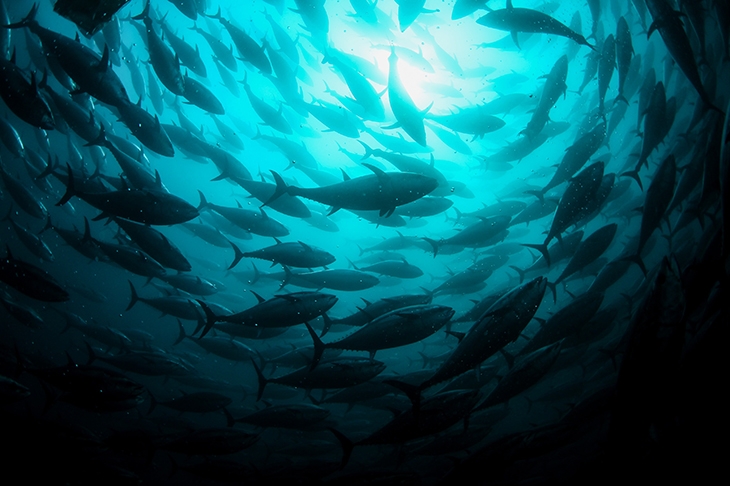Flies buzzing, strange rustling, crunching sounds, and then the most chilling screech you’ll have heard all week. Vultures were feeding off the carcass of a zebra in Kenya, recorded by Chris Watson. He had been up before dawn, on the look-out for a suitable carcass to attract the scavenging vultures. He was lucky to find one and clipped two microphones to the ribcage, running the cable to his recording vehicle 50 yards away. By break of day the vultures had appeared and were taking their breakfast.
Watson believes that recording sound at such close quarters ‘really fires our imaginations in a unique way’. He was not the only contributor to The Changing Sound of Radio on Radio 4 Extra (produced by Jessica Treen) to talk about radio as if it is a visual medium. In this compilation of archive programmes, threaded together by Watson’s memories of a life spent in the field and back in a studio creating sound art, it was as if we were given snapshots of the best audio since the 1960s when as a teenager Watson first began recording. The sound of a blackbird at full throttle in Thirteen Ways of Looking at a Blackbird. The ‘snap, crackle and pop’ of pistol shrimps, who use sound as a weapon, stunning their victims, recorded by Watson by attaching a microphone to a fishing line and dangling it off the pier at Blyth harbour in Northumberland. Haddock recorded out at sea, in hectic courtship, described as ‘like a motorbike revving up’.
Who needs pictures? In Fifteen Inches Per Second, a 2004 documentary about quarter-inch magnetic tape that revolutionised radio (and was invented by the Germans during the second world war), the feature-maker Piers Plowright recalled his first experience of walking into a studio and seeing ‘this place of shining circles, things revolving slowly on silver spools’. For him, the great delight of working with magnetic tape, as opposed to digital technology, was ‘the visual aspect of it’. Watching the tape running through from reel to reel, those precious 15 inches captured in a second, was like going on a journey. Listening to Plowright and his programmes would be useful for budding podcasters who’ve never experienced the limitations and yet expansiveness of analogue recording.
Heart and Soul on the World Service this week was an exemplar of another kind of radio feature, using not sound pictures but the telling impact of voices talking straight to mike. Patricia Raybon and her daughter Alana were telling Mike Wooldridge how they have learnt to live with their profound religious differences after years of conflict. Patricia is a deeply committed Christian, who brought Alana up in Colorado to attend church, say grace before meals, believe in the salvation of Christ. ‘It’s the definition of who I am,’ she said, ‘and it defines everything I do.’
As a teenager, though, Alana found herself uncomfortable at church services and then came across verses in the Bible that said: ‘Slaves should obey their master.’ As the daughter of an African-American mother, she was horrified. At first she joined the Nation of Islam and began wearing the hijab. She said it made her feel ‘safer’ if she dressed modestly. For Patricia, though, it produced echoes of discrimination on the school bus, when no one would sit next to her, or on family picnics, when the white families would leave as soon as the black families arrived at the site. She feared that if she went out with Alana in her hijab she would get the same glances. Then Alana met her future husband, also a Muslim convert, and Patricia realised there was no possibility of Alana giving up her Muslim faith. They could not talk without arguing.
Now, though, they’ve published a book, letters written to each other that put down in words the things that matter most to each of them. For the first time they have been able to talk to each other about what they believe without coming to an impasse, hitting that wall of incomprehension. ‘We’ve been forced to confront each other’s beliefs,’ says Patricia. The process has been so cathartic that Alana has moved back to Colorado and is living with her parents. They continue to say grace before meals to God while their daughter, son-in-law and three grandchildren pray to Allah — at the same table. A family story told with insight, economy and purpose.
Turbulence on Radio 4 (produced by Justine Willett) is a series of 12 short stories by David Szalay, all set on plane journeys. Not much liking air travel, I was intrigued by the premise and the first story did not disappoint, capturing that altered state which being cooped up in a silver-lined capsule seems to invoke. Read by Sara Kestelman, it takes us on a short-haul flight from London to Madrid as a mother leaves behind her son, who’s been ill with cancer. She begins to feel profoundly uneasy as the plane leaves the ground, ‘the tightly packed fabric of the world seemed to loosen… Her thoughts started to seem like things that were actually happening.’ We have to wait a whole week before we can fly on from Madrid to Dakar.






Comments